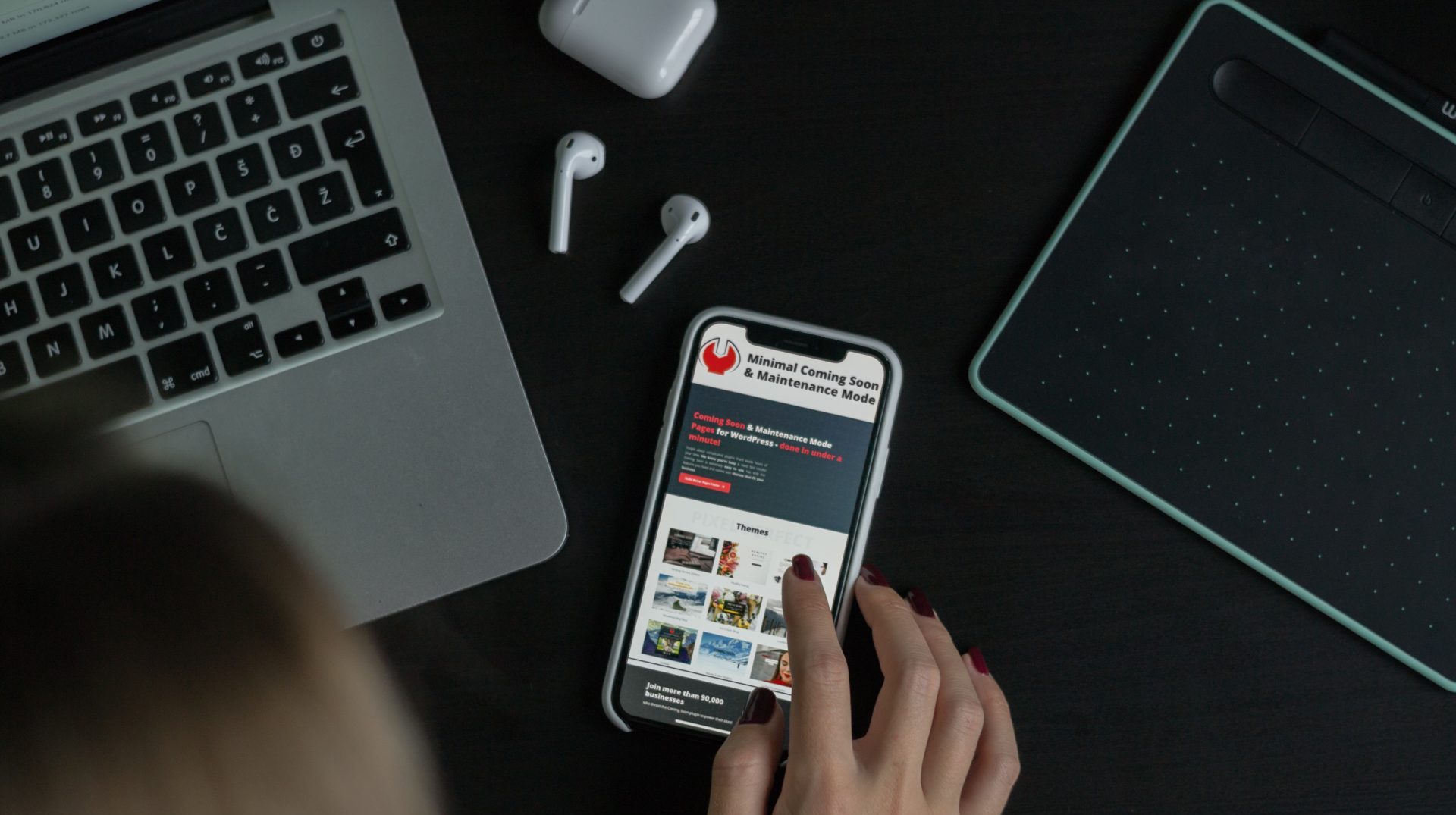
Newsletter
Newsletter
Research from Airship reinforces how important it is to engage people with your app after they download it. We tell you how.
28th July 2023

In the Pugpig weekly media bulletin, Pugpig’s consulting services director Kevin Anderson and digital growth consultant James Kember distill some of the best strategies and tactics that are driving growth in audiences, revenue and innovation at media businesses around the world.
By James
This week we’ve been reading Airship’s recently released mobile consumer survey, in which they surveyed 11,000 consumers across the US, Canada, the UK, France, Germany, South Africa, Singapore, Thailand, Indonesia and Brazil. They asked people why they use apps, what drives them to delete certain apps, what personal information they were willing to share and what their attitude was towards push notifications.
The headline finding was that the primary reason that consumers gravitate towards apps in general is because they find them easy to use, they simplify their lives and save them time. This remained the case across all income groups and generations, with a slight preference from older ages to preferring apps for their time saving benefits, whereas younger people favoured the ability of apps to simplify their lives.
So that was the reason that people use apps, but how did they find them and choose an app? According to Airship, searching and browsing the app store and traditional search are the two main ways that apps are discovered. In our App Store Optimisation strategic guide, we highlight best practices to make sure your listing is as effective as possible, and we regularly work with our customers to ensure that their app pages stand out in search within the stores and also support discovery via search engines. If you would like some pointers or to discuss a broader push notification strategy, please drop us an email.
Word of mouth remains important, and it ranked third in Airship’s survey of how apps are discovered. This means that ensuring that your users are enjoying and engaging with your app is vital. The biggest fans of your app can serve as its biggest promoters.
The survey also highlighted one particularly important point: There is only a very short time window to engage a new user with your app.
Moreover, the primary reasons for getting rid of apps were pretty mundane. It was done to free up phone storage or simply because it had never been used. Therefore, building a relationship within the first couple of interactions is essential. The first element of this should be a comprehensive approach to onboarding in which the features and benefits of the app are explained clearly to the user upon first open.
This should be followed by an engagement strategy that starts immediately. It should focus on encouraging users to open the app regularly, building habit and loyalty from the moment they first download. Airship cautioned against relying on email to do this. They pointed to data from Gartner’s Marketing Symposium 2023 that demonstrated that email open rates have fallen from 22% at the start of 2020 to 12% in October 2022 and their survey reported that 79% of consumers ignored or deleted emails from brands at least half the time. However, this was referring to marketing emails in general. Publishers are in a different place when it comes to email and are able to leverage content a lot more effectively than other businesses. For example, we generally see high levels of app engagement by linking out to the app from email newsletters.
Therefore, we would suggest that whilst email shouldn’t be the only approach to driving engagement, it definitely has a place. This is also the case for social media. When used in a targeted way it can help to bring users back into the app, especially during the vital 48-hour period after a user has downloaded. Also, using smart banners on your mobile site is key and helps to integrate the app within the wider digital ecosystem.
For Airship, their main suggestion to promote engagement with the app uses the “most visible real estate on the planet” – the phone’s lockscreen. However, for this to work the user needs to opt in for push notifications. So, how to persuade them? Airship’s survey indicated that offering “immediate discounts and loyalty rewards” is the most effective way to get a user to sign up for push whilst “personalized offers” also ranked highly. For publishers discounting and offers aren’t really applicable, but immediacy and personalisation is. For news apps looking to increase opt-in to push, highlighting breaking news and offering the ability for the user to select their interests is likely an effective set of tools to encourage signup.
It’s important to ensure that personalisation isn’t creepy. In the survey, predictive personalisation based on “everything the brand knows about you” ranked low across almost all countries and income groups. It suggests that it’s important to allow users to personalise for themselves and not to try and do it all for them. That being said, the success of the various algorithms (Facebook, TikTok, etc.) appears to contradict this. Perhaps, although users might not be particularly keen when asked about predictive personalisation, they respond to it nonetheless.
To enable personalisation on any level the app needs to collect user data. Airship described information sharing as a “delicate dance” although the willingness for consumers to share data grew year on year across all of the categories within the survey. The data from 2023 showed that people were particularly willing to give their data where there was a practical reason for it, for example email addresses, communication preferences, interests and browsing history. Where it became a bit murkier was around willingness to share information related to browsing behaviour on other sites and apps, social profile information and real-world location. This suggests that the creepy factor is again playing a role. Overall, the lesson for publishers is if a user understands why you want their data and what you’re going to do with it, they’re more likely to be willing to provide it. Always make sure to make a case for why the data is being collected, and if it’s not useful for the user, don’t ask for it.
By Kevin
Successful media companies in the US and UK have long looked abroad to fuel their next stage of growth. Since 2016, the New York Times has spoken about its global ambitions. Last year, it restated and reframed that strategy by targeting a subset of what they saw as a global addressable market of 135m potential readers, and their goal is to add another 5m to its existing base of 10m subscribers by 2027. And there are many other examples of news and consumer media companies building a global footprint such as Germany’s Axel Springer, the Guardian, Reach and Daily Mail in the UK, as well as Condé Nast and Hearst from the US, just to name a few.
Most of the global strategies have been executed by large media companies in the US and western Europe, but at WAN-IFRA’s recent Global Congress, media companies in the Global South have announced their plans to conquer the world. The Nation Media Group in Kenya is looking to become a pan-African media brand and a voice about Africa for the rest of the world, according to Pamela Sittoni, Group Managing Editor, Nation Media Group.
But what really caught my eye was Argentina’s Clarín. The first step in their growth story was to launch a digital subscription business, and their success shows how quickly a well-executed digital strategy can deliver results. Like most publishers focused on subscriptions, they are building a business based on loyalty and audience segmentation. They have a smart paywall of their own making that allows them to target different audience segments. Only four or five years ago, only 20% of their revenues came from digital when they launched their subscription strategy, and now they have 700,000 paying digital subscribers with the majority of their revenues from digital. Five years from now, their goal is to have 80% of their revenues from digital businesses. They rank as having the largest paying digital audience in Latin America and the only Latin American publisher in the top 20 digital subscription businesses in the world, WAN-IFRA said. As they point out, this has come from focusing on the opportunities from digital not just the threats.
For Clarín, they have both brought new products to their existing markets and expanded to new markets. They developed the new products because of the well-known challenges in the existing news business with the launch of a sports magazine, a move into real estate and educational content as well as a more adventurous expansion with a football manager game. The global audience for Spanish-language content also provides them with opportunities, and they have seen their audience grow in the US.
It provides a playbook for digital transformation:
It demonstrates how delivering great content via products that people want to pay for can provide the launching pad for truly ambitious growth.
Here are some of the most important headlines about the business of news and publishing as well as strategies and tactics in product management, analytics and audience engagement.

Newsletter

Newsletter

Newsletter

Newsletter

Newsletter